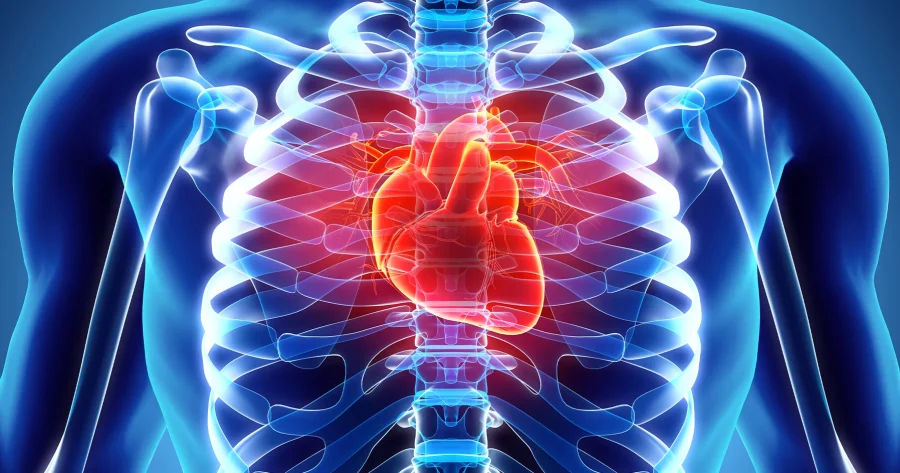Cardiovascular disease (CVD) refers to a number of health conditions that affect the circulatory system, including the heart, arteries, veins, and capillaries.
CVD is now the most common cause of deathTrusted Source worldwide.
However, there are many ways to reduce the risk of developing these conditions. There are also many treatment options available if do they occur.
The treatment, symptoms, and prevention of the conditions that are part of CVD often overlap.
CVD comprises many different types of condition. Some of these might develop at the same time or lead to other conditions or diseases within the group.
Diseases and conditions that affect the heart include: angina, a type of chest pain that occurs due to decreased blood flow into the heart arrhythmia, or an irregular heartbeat or heart rhythm congenital heart disease, in which a problem with heart function or structure is present from birth coronary artery disease, which affects the arteries that feed the heart muscle heart attack, or a sudden blockage to the heart’s blood flow and oxygen supply heart failure, wherein the heart cannot contract or relax normally dilated cardiomyopathy, a type of heart failure, in which the heart gets larger and cannot pump blood efficiently hypertrophic cardiomyopathy, in which the heart muscle walls thicken and problems with relaxation of the muscle, blood flow, and electrical instability develop mitral regurgitation, in which blood leaks back through the mitral valve of the heart during contractions mitral valve prolapse, in which part of the mitral valve bulges into the left atrium of the heart while it contracts, causing mitral regurgitation pulmonary stenosis, in which a narrowing of the pulmonary artery reduces blood flow from the right ventricle (pumping chamber to the lungs) to the pulmonary artery (blood vessel that carries deoxygenated blood to the lungs) aortic stenosis, a narrowing of the heart valve that can cause blockage to blood flow leaving the heart atrial fibrillation, an irregular rhythm that can increase the risk of stroke rheumatic heart disease, a complication of strep throat that causes inflammation in the heart and which can affect the function of heart valves radiation heart disease, wherein radiation to the chest can lead to damage to the heart valves and blood vessels Vascular diseases affect the arteries, veins, or capillaries throughout the body and around the heart.
They include: peripheral artery disease, which causes arteries to become narrow and reduces blood flow to the limbs aneurysm, a bulge or enlargement in an artery that can rupture and bleed atherosclerosis, in which plaque forms along the walls of blood vessels, narrowing them and restricting the flow of oxygen rich blood renal artery disease, which affects the flow of blood to and from the kidneys and can lead to high blood pressure Raynaud’s disease, which causes arteries to spasm and temporarily restrict blood flow peripheral venous disease, or general damage in the veins that transport blood from the feet and arms back to the heart, which causes leg swelling and varicose veins ischemic stroke, in which a blood clot moves to the brain and causes damage venous blood clots, which can break loose and become dangerous if they travel to the pulmonary artery
blood clotting disorders, in which blood clots form too quickly or not quickly enough and lead to excessive bleeding or clotting
Buerger’s disease, which leads to blood clots and inflammation, often in the legs, and which may result in gangrene
It is possible to manage some health conditions within CVD by making lifestyle changes, but some conditions may be life threatening and require emergency surgery.
Symptoms
Symptoms will vary depending on the specific condition. Some conditions, such as type 2 diabetes or hypertension, may initially cause no symptoms at all.
However, typical symptoms of an underlying cardiovascular issue include:
pain or pressure in the chest, which may indicate angina
pain or discomfort in the arms, left shoulder, elbows, jaw, or back
shortness of breath
nausea and fatigue
lightheadedness or dizziness
cold sweats
Although these are the most common ones, CVD can cause symptoms anywhere in the body.
Lifestyle tips
People can take the following steps to prevent some of the conditions within CVD:
Manage body weight: The National Institute of Diabetes and Digestive and Kidney Disorders advise that if a person loses 5–10%Trusted Source of their body weight, they may reduce their risk of developing CVD.
Get regular exercise: The American Heart Association (AHA) recommend doing 150 minutesTrusted Source of moderate-to-intense physical activity every week.
Follow a heart-healthy diet: Eating foods that contain polyunsaturated fats and omega-3, such as oily fish, alongside fruits and vegetables can support heart health and reduce the risk of CVD. Reducing the intake of processed food, salt, saturated fat, and added sugar has a similar effect.
Quit smoking: Smoking is a key risk factor for almost all forms of CVD. Although quitting can be difficult, taking steps to do so can drastically reduce its damaging effects on the heart.
Here, learn more about the benefits of exercise.
HEALTHLINE NEWSLETTER
Get our weekly Hear










